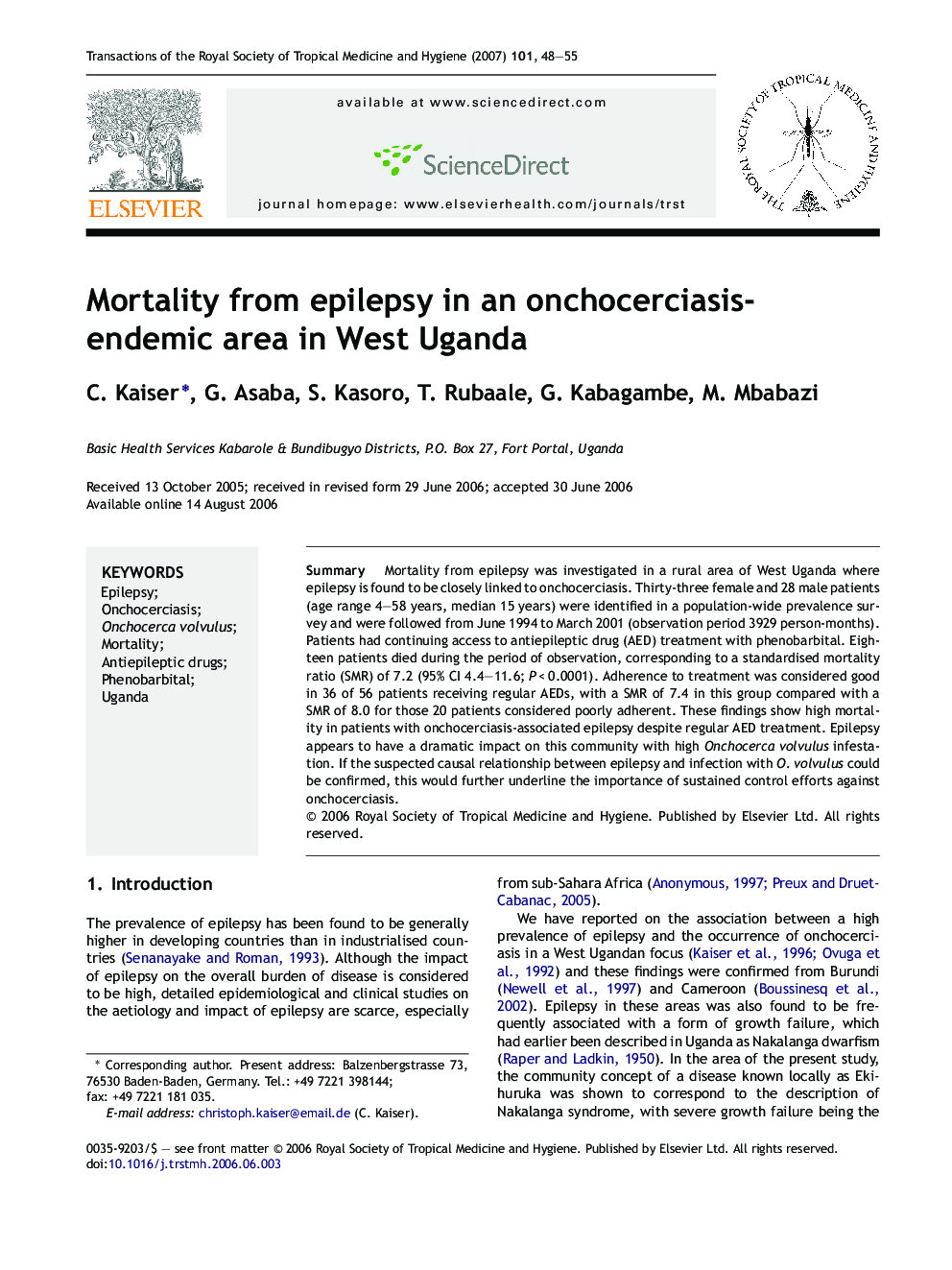| Article ID | Journal | Published Year | Pages | File Type |
|---|---|---|---|---|
| 6137773 | Transactions of the Royal Society of Tropical Medicine and Hygiene | 2007 | 8 Pages |
Abstract
Mortality from epilepsy was investigated in a rural area of West Uganda where epilepsy is found to be closely linked to onchocerciasis. Thirty-three female and 28 male patients (age range 4-58 years, median 15 years) were identified in a population-wide prevalence survey and were followed from June 1994 to March 2001 (observation period 3929 person-months). Patients had continuing access to antiepileptic drug (AED) treatment with phenobarbital. Eighteen patients died during the period of observation, corresponding to a standardised mortality ratio (SMR) of 7.2 (95% CI 4.4-11.6; PÂ <Â 0.0001). Adherence to treatment was considered good in 36 of 56 patients receiving regular AEDs, with a SMR of 7.4 in this group compared with a SMR of 8.0 for those 20 patients considered poorly adherent. These findings show high mortality in patients with onchocerciasis-associated epilepsy despite regular AED treatment. Epilepsy appears to have a dramatic impact on this community with high Onchocerca volvulus infestation. If the suspected causal relationship between epilepsy and infection with O. volvulus could be confirmed, this would further underline the importance of sustained control efforts against onchocerciasis.
Related Topics
Life Sciences
Immunology and Microbiology
Applied Microbiology and Biotechnology
Authors
C. Kaiser, G. Asaba, S. Kasoro, T. Rubaale, G. Kabagambe, M. Mbabazi,
